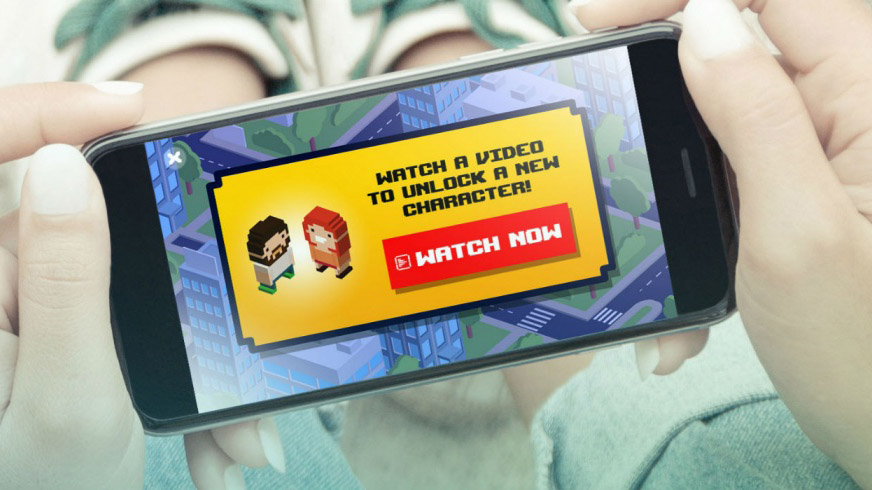With millions of apps at consumers’ fingertips, discovery can be a real problem for some developers, much less retention. Tapjoy’s latest report, “The Impact of Rewarded Ads on App Retention” found that under 25 percent of observed app users are still on board after one week, but a rewarded ad can change everything.
Rewarded ads, as their name suggests, are opt-in engagements that reward users for participating. Unlike distracting banner ads or pop-ups, players only see rewarded ads when they choose to, and they earn in-game perks just for participating. For example, a player may earn extra moves for watching a 15-second video or virtual currency in a messenger app by taking a brief survey.
Tapjoy sampled the behavior of more than 500 million app users worldwide across nearly 10,000 apps in April of 2016 and June of 2017. The mobile advertising and monetization company saw app retention rates drop to just 22 percent after one week of installation and only 12 percent after one month.
Users who watched just one rewarded video during their first week had a 30-day retention rate of 53.2 percent—an increase of more than 300 percent over the average. Amazingly, players who watched seven videos during their first week went on to have a 71 percent retention rate after 30 days.
Engaging in a full-screen interstitial (FSI) during an app user’s first week raised their 30-day retention rate to 52.72 percent—a figure that increases with the number of first-week engagements. Offerwalls—a section of qualifying offers for users to choose from in order to earn rewards—saw a 30-day app retention rate as high as 55.83 percent.
“Developers should use all of the tools at their disposal—in-app messages to video, direct play videos, push notifications to video, etc.—to make sure that players have the opportunity to complete at least one rewarded video ad at some point during their first week post-install,” Tapjoy advises in the report.
No one wants their mobile game session interrupted by annoying ads, and even game developers aren’t thrilled with the practice. Some 51 percent of game developers called ads “a necessary evil” in a recent survey, and only 17 percent see them as “worth it.”
Studies show that users find ads (of the rewarded variety) very worth it. In fact, NPD found that a majority of mobile game users prefer to earn in-game currency.
Several developers have found success using a rewarded ad monetization platform—so much so that players will complain if the ads cease to work. When Hyper Hippo launched rewarded ads in its game Adventure Capitalist, players were quick to report bugs because they wanted to take advantage of the offers.
“There’s no better to way to know that we did the ads well than to have people say, ‘Hey! We can’t watch your ads. Fix it,’” said the game’s producer Anthony Pecorella.
When Rovio removed rewarded ads from its game Angry Birds Transformers, the players were not happy. “There was a backlash from that community saying ‘give us back our reward videos,’” Rovio executive vice president Wilhelm Taht told Gamasutra.
Rewarded ads aren’t just for games, although the practical applications within that space are obvious. The new LiquidSky mobile app offers virtual currency through an offerwall, and Tapjoy recently partnered with the Line messenger app to service rewarded ads to its 220 active monthly users. Line users are now able to earn “Line Points” for free by engaging with advertisements. These points can be traded for premium in-app stickers, themes and other types of content on the app.
“Get [users] to complete at least one rewarded ad offer, and their chances of long-term retention will increase significantly,” Tapjoy states in the report. “The more ads they engage with, the more valuable they will become for your app.”

